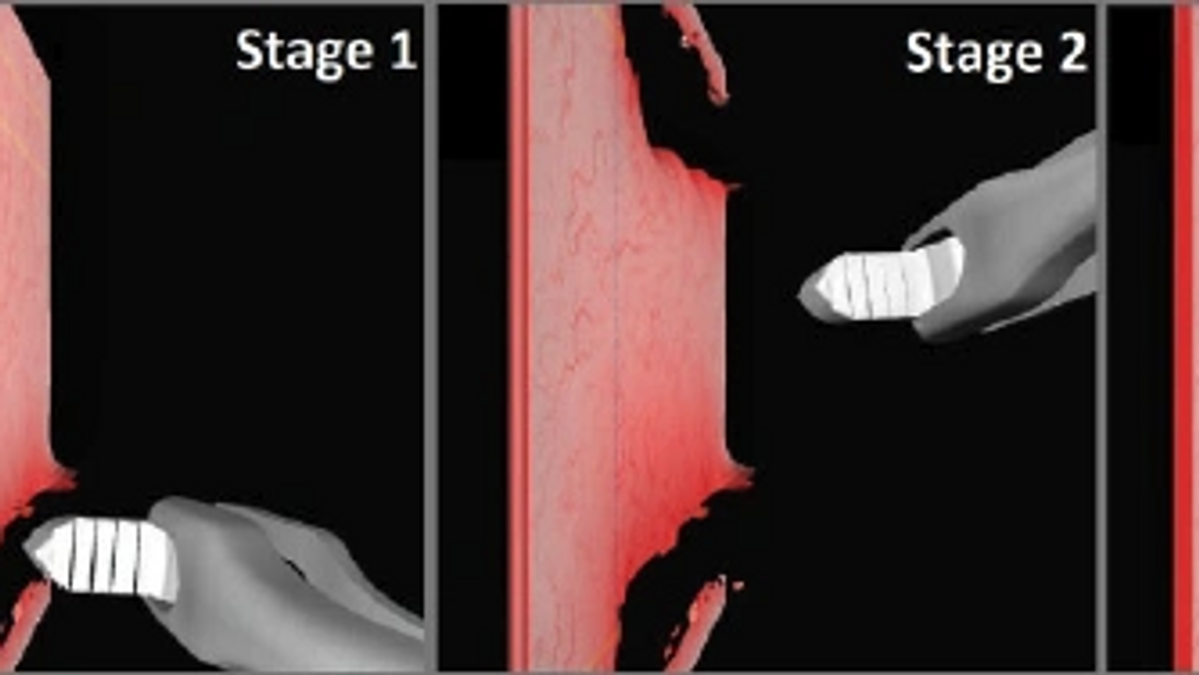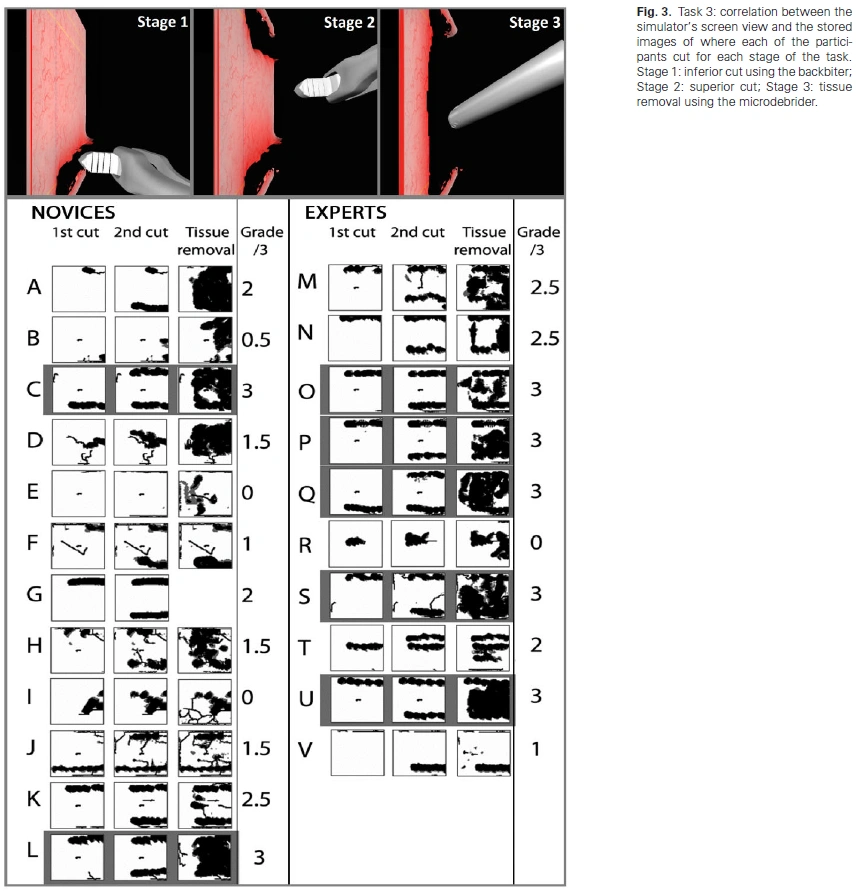
Surgical Simulation Performance Metrics
Describes some of my research on performance metrics using a surgical simulation I developed with surgeons whilst at Flinders University. Since VR training simulations have all movement and interaction data, it can be processed to give more informative performance measures that can improve surgical training efficacy and efficiency. These metrics can form the basis of AI-based feedback and guided learning in tomorrow’s surgical training simulations.
Comparing surgical experience with performance on a sinus surgery simulator
Authors: LE Diment, GS Ruthenbeck, N Dharmawardana, AS Carney, CM Woods, EH Ooi, KJ Reynolds.
Abstract:
Background: This study evaluates whether surgical experience influences technical competence using the Flinders sinus surgery simulator, a virtual environment designed to teach nasal endoscopic surgical skills.
Methods: Ten experienced sinus surgeons (five consultants and five registrars) and 14 novices (seven resident medical officers and seven interns/medical students) completed three simulation tasks using haptic controllers. Task 1 required navigation of the sinuses and identification of six anatomical landmarks, Task 2 required removal of unhealthy tissue while preserving healthy tissue and Task 3 entailed backbiting within pre-set lines on the uncinate process and microdebriding tissue between the cuts.
Results: Novices were compared with experts on a range of measures, using Mann–Whitney U-tests. Novices took longer on all tasks (Task 1: 278%, P < 0.005; Task 2: 112%, P < 0.005; Task 3: 72%, P < 0.005). In Task 1, novices’ instruments travelled
further than experts’ (379%, P < 0.005), and provided greater maximum force (12%, P < 0.05). In Tasks 2 and 3 novices performed more cutting movements to remove the tissue (Task 2: 1500%, P < 0.005; Task 3: 72%, P < 0.005). Experts also completed more of Task 3 (66%, P < 0.05).
Conclusions: The study demonstrated the Flinders sinus simulator’s construct validity, differentiating between experts and novices with respect to procedure time, instrument distance travelled and number of cutting motions to complete the task.
Request full article on ResearchGate, or download from PubMed.
